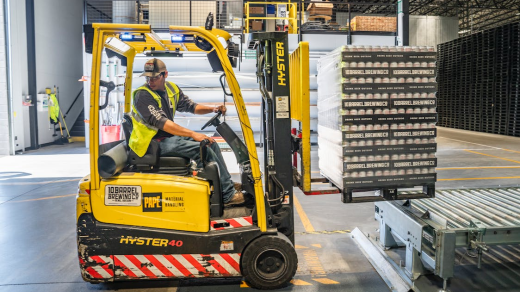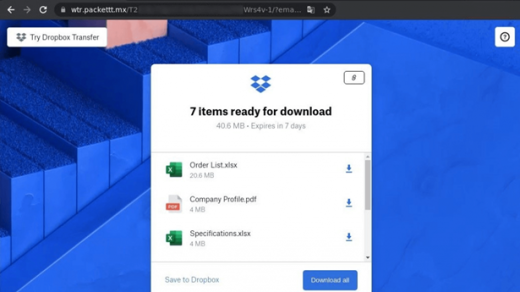When it comes to decking out personalized clothing with your unique color designs, you’ve got two solid options in the ring: screen printing and heat transfer vinyl (HTV). Let’s break the difference between heat transfer vinyl vs screen printing.
| Aspect | Screen Printing | Heat Transfer Vinyl (HTV) |
| Setup | Time-intensive due to multiple screens | Quick setup, minimal preparation required |
| Cost Efficiency | Cost-effective for large orders | Affordable for small runs or one-off prints |
| Color Complexity | Suitable for vibrant, multi-color designs | Handles intricate, full-color designs |
| Durability | Long-lasting, durable prints | May have durability concerns over time |
| Best For | Bulk orders and consistent designs | Personalized, small-batch or urgent orders |
| Fabric Range | Works on various fabrics | Adhesion may vary based on fabric type |
| Production Speed | Slower due to setup, efficient for bulk | Faster process, suitable for quick runs |
| Detail Precision | Better for solid colors, less intricate | Handles fine details, including gradients |
Screen Printing:
This method involves creating custom T-shirts or any personalized apparel by pushing ink through a fine mesh screen onto the fabric. It’s the go-to for high-quality, durable prints, especially for bulk orders. The process is a bit intricate, needing separate screens for each color in your design, making it a champion for full-color designs. The pros? Vibrant, long-lasting prints that can withstand the wear and tear of time.
However, screen printing work requires some setup time and cost, especially when dealing with multiple colors. But once it’s set, it’s all smooth sailing.
Screen Printing Process:
Screen printing is a meticulous yet rewarding process for creating custom T-shirts and personalized apparel. Here’s a breakdown of its steps:
- Design Preparation: Your design is broken down into individual colors, with each color requiring a separate screen.
- Screen Preparation: A fine mesh screen is used for each color in the design. A light-sensitive emulsion is applied to the screen, and the design is transferred onto it using a UV light exposure unit. This process creates the stencil for each color.
- Ink Application: Once the screens are ready, ink is applied to each screen separately. The fabric is placed beneath the screens, and a squeegee is used to push the ink through the mesh onto the fabric.
- Heat Curing: After the ink is applied, the fabric goes through a heat curing process to set the ink permanently, ensuring a durable and long-lasting print.
Screen Printing Pros and Cons
Pros:
- High Quality: Produces vibrant, long-lasting prints known for their durability.
- Ideal for Bulk Orders: Cost-effective for large quantities due to efficiency in production once set up.
- Color Depth: Allows for intricate and vibrant full-color designs.
- Versatility: Works well on various garment types and materials.
Cons:
- Setup Time: Requires preparation with separate screens for each color, making it time-consuming initially.
- Cost for Multiple Colors: More colors mean more screens, resulting in increased setup costs.
- Not Ideal for Small Runs: Less cost-effective for smaller batches or one-off prints.
- Not Suitable for Detailed Artwork: Might not capture intricate details as precisely as other methods.
Applications of Screen Printing:
Apparel Branding: Screen printing is widely used in the fashion industry for branding purposes on clothing, including T-shirts, hoodies, hats, and more.
Team Uniforms and Jerseys: Sports teams often opt for screen printing for their uniforms due to its durability and ability to display team logos and designs prominently.
Merchandise Production: Bands, businesses, and events leverage screen printing for merchandise such as tote bags, posters, and promotional items.
Large Batch Orders: Ideal for producing a high volume of garments with the same design, making it popular for bulk orders.
Detailed Artwork: While it may have limitations, screen printing is adept at reproducing detailed designs, especially those with solid colors.
Heat Transfer Vinyl (HTV):
On the other side of the ring, we have HTV, which involves using a heat press to adhere vinyl designs onto clothing. It’s fantastic for smaller runs or one-off personalized pieces. The process involves cutting out your design from colored vinyl sheets, weeding out the excess, and then using a heat press to transfer it onto the fabric. HTV shines when you’re after intricate designs or small batches due to its flexibility and ease of customization.
The pros of HTV? Quick turnaround, especially for personalized clothing, and the ability to get that full-color pop without much hassle. However, durability might be a concern in comparison to screen printing for heavy-duty wear and tear.
Heat Transfer Vinyl (HTV) Process:
HTV is a more direct and adaptable method for personalized clothing and custom T-shirts. Here’s a rundown of the steps involved:
- Design Creation and Cutting: Your design is created digitally and then cut out of colored vinyl sheets using a plotter or cutting machine. This step involves weeding out the excess vinyl, leaving only the desired design on a transfer sheet.
- Heat Press Application: The cut vinyl design is placed onto the fabric, and a heat press is used to apply both heat and pressure. This process transfers the vinyl onto the fabric, bonding it securely.
- Peeling and Finalizing: Once the vinyl has been pressed onto the fabric, the transfer sheet is peeled away, leaving behind the design on the garment. Some HTV requires a cold or hot peel, depending on the type of vinyl used.
Each method has its unique intricacies, catering to different needs and preferences when it comes to creating personalized clothing or custom T-shirts.
Heat Transfer Vinyl (HTV) Pros and Cons:
Pros:
- Customization and Flexibility: Perfect for one-off or small batch prints, enabling easy customization.
- Quick Turnaround: Fast process, suitable for tight deadlines or urgent orders.
- Full-Color Prints: Capable of achieving vibrant, detailed, and full-color designs without additional setup.
- Affordable for Small Quantities: Cost-effective for smaller runs due to minimal setup requirements.
Cons:
- Durability Concerns: May not withstand heavy wear and tear as effectively as screen printing in the long run.
- Limitation in Fabric Types: Some HTV might not adhere well to certain fabrics or materials.
- Skill and Precision Required: Cutting and weeding the vinyl accurately can be challenging for intricate designs.
- Limited Texture: The vinyl might have a different feel on the fabric compared to the screen-printed ink, which is more integrated.
Applications of Heat Transfer Vinyl (HTV):
Customized Individual Apparel: HTV shines when it comes to one-off or personalized clothing items, allowing for unique designs on-demand.
Small Business Merchandise: For small businesses or entrepreneurs, HTV offers an affordable way to create branded merchandise in smaller quantities.
Quick Turnaround Orders: Ideal for urgent or rush orders due to its minimal setup requirements and fast application process.
Complex Designs: HTV can handle intricate designs, including gradients and full-color prints, providing flexibility in artistic expression.
DIY and Craft Projects: Popular among hobbyists and DIY enthusiasts for creating custom designs on various items like bags, home décor, and accessories.
The Bottomline on Heat Transfer Vinyl vs Screen Printing
So, when it comes to choosing between screen printing and heat transfer vinyl for your custom T-shirts or personalized clothing, consider the scale of your project, the complexity of your design, and how much wear and tear the clothing might face. While screen printing excels in bulk production and durability for branding purposes, HTV offers versatility and customization for smaller-scale, personalized projects with intricate designs and quick turnarounds. The choice often depends on the specific requirements of the project and the desired outcome.




Recent Comments